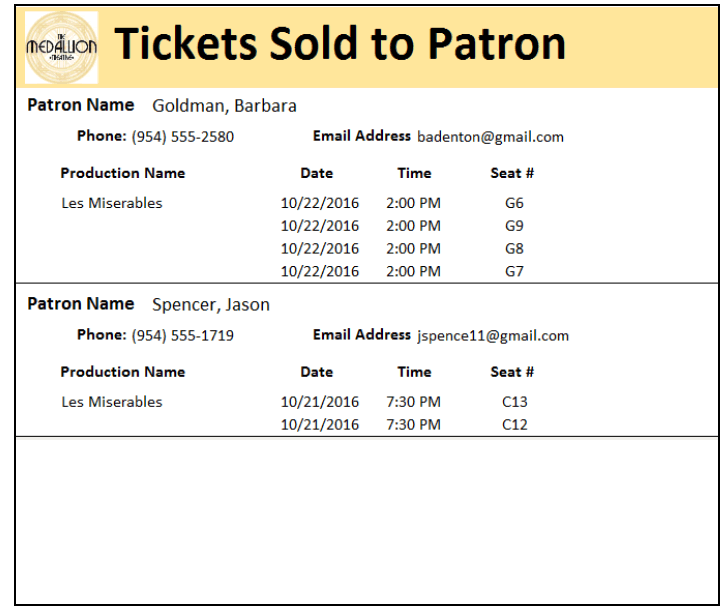Original Articles: 2017 Vol: 23 Issue: 2
Teaching Note : Systems Analysis, Design, and Development Case Study: Sarah's Short Cakes-sales Order System
Terry L. Fox
University of Mary Hardin-Baylor
Case Description
The primary purpose of this case study is for Systems Analysis and Design, Systems Development, and Database courses. Students examine realistic dialog and interview notes, as well as existing documents. For Systems Analysis and Design courses, the students should be able to follow this realistic and fairly common case study of a small organization and conduct the planning, analysis, and design phases of the System Development Life Cycle (SDLC), using either a traditional or object-oriented approach. Deliverables would include process and data diagrams and modeling, and user interface designs, and this case study should require approximately 14-17 hours to complete, outside normal class time. In System Development courses, e.g., capstone courses for a computer information systems major, students can use this case study to not only analyze and design a solution, but actually develop the solution using various windows or web-based tools. The entire project should require approximately 22-28 hours to complete. For Database courses, this case could be used to illustrate database design techniques, resulting in the creation of appropriate data models and physical database designs. This should require approximately 10-12 hours to complete. The case study is of moderate difficulty – ranging from a four to five, and is designed for junior and senior level students, but could also be used for graduate courses.
Case Synopsis
Dr. Thomas Waggoner, an information systems professor at the local university, is at the Will Call window at the Medallion Theatre, trying to pick up tickets he had reserved. However, due to an oversight which turns out to be rather frequent, his tickets were sold to another patron. Fortunately for Dr. Waggoner and his wife, who are celebrating their wedding anniversary, the box office manager finds two box seats which had not been claimed. In talking with the box office manager, Dr. Waggoner starts thinking that he could perhaps help the theatre avoid this type of problem in the future. His students could design and build a system to help keep track of ticket sales, and hopefully help the theatre become more efficient and improve customer satisfaction.
Teaching Notes
Case Purpose and Objectives
The purpose of this case study is to provide an opportunity for information systems students to apply data modeling, process modeling, and user interface design skills to a semi-realistic scenario. Additionally, students in database courses can apply their knowledge and skills to design the class diagram/entity relationship diagram, as well as create a physical database based on the information requirements in this case. Furthermore, students in system development/capstone courses can use this case as a comprehensive project, proceeding through the system development life cycle and develop a working ticket sales system for the Medallion Theatre. The interview notes and supporting documents help add a sense of reality.
Methodology
This case is based on the author’s own experiences and has been modified to be more applicable to a classroom setting. The names and specific details have been changed. This case study presents a small but realistic opportunity for students to analyze, design, and develop a ticket sales system for a local theatre. The scenario should be fairly familiar to many students who have attended a production or concert and understand the concept of reserved seating. This case study has been used by the author in a systems analysis and design course with great interest and success and the author has incorporated suggestions from his students to enhance the case.
Teaching Suggestions
This case is designed to be used as a major project in either a systems analysis and design course, a database course, or a systems development/capstone course. In my systems analysis and design courses, I generally have students work in teams of 3-4 to complete a project of this size. I introduce the project approximately halfway through the semester, after we have finished discussing the planning and analysis phases of the system development life cycle. The students are able to begin work on the planning (e.g., system proposal) and analysis requirements (e.g., process modeling, data modeling) while we begin discussing the design phase during class. As the students are completing the analysis work, they can then begin working on the design requirements (e.g., user interface design). The case is to be completed by the last week of the semester. The case is most appropriate at the undergraduate level, but could be used in graduate-level systems analysis and design, database, and system development courses.
To incorporate the practice of project management, an additional requirement, particularly in a systems development/capstone course, could be added to develop a work breakdown structure, schedule, and budget using a tool such as Microsoft Project. The students should then keep track of their actual time worked and examine variances, illustrating the difficulty in developing time estimates on system development projects. A discussion of the variances could be included in the pre-implementation review (for systems analysis and design) or post-implementation review (for system development/capstone). The pre(post)-implementation review is an excellent tool to allow the students to reflect on their project, identifying what went well, and also what did not go well. The review often touches on topics such as tools used, scheduling issues, group dynamics, etc.
As the instructor for the course in which this case is used, you will need to have both good technical skills and project management ability. Most likely the different groups in your class will be working on a variety of case studies and projects, and you will need to help them stay focused, e.g., with milestone deadlines, as well as help solve their technical issues.
Proposed Solution
The suggested solution in the appendix is based on an object-oriented approach and includes a class diagram and use case diagram, but the case can certainly be conducted using a traditional approach, wherein the students would develop entity relationship diagrams and data flow diagrams. In addition, example user interface designs are provided.
Conclusion
This case study offers students an opportunity to apply concepts and techniques learned in their systems analysis and design, database, and systems development/capstone classes. The case is realistic, reasonably-sized for a major project in a semester-long course, and the scenario should be one in which they are somewhat familiar.
Appendix
Use Case Diagram
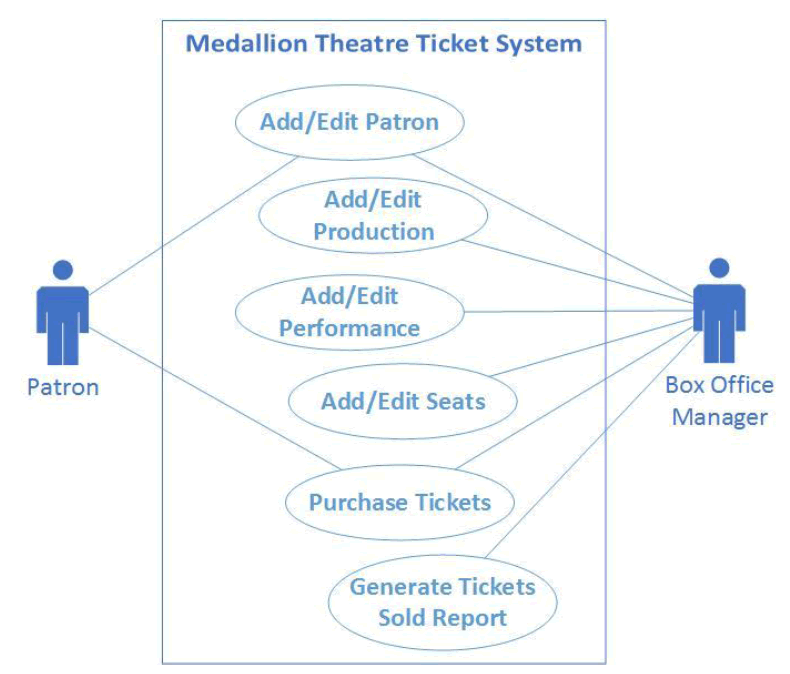
Class Diagram
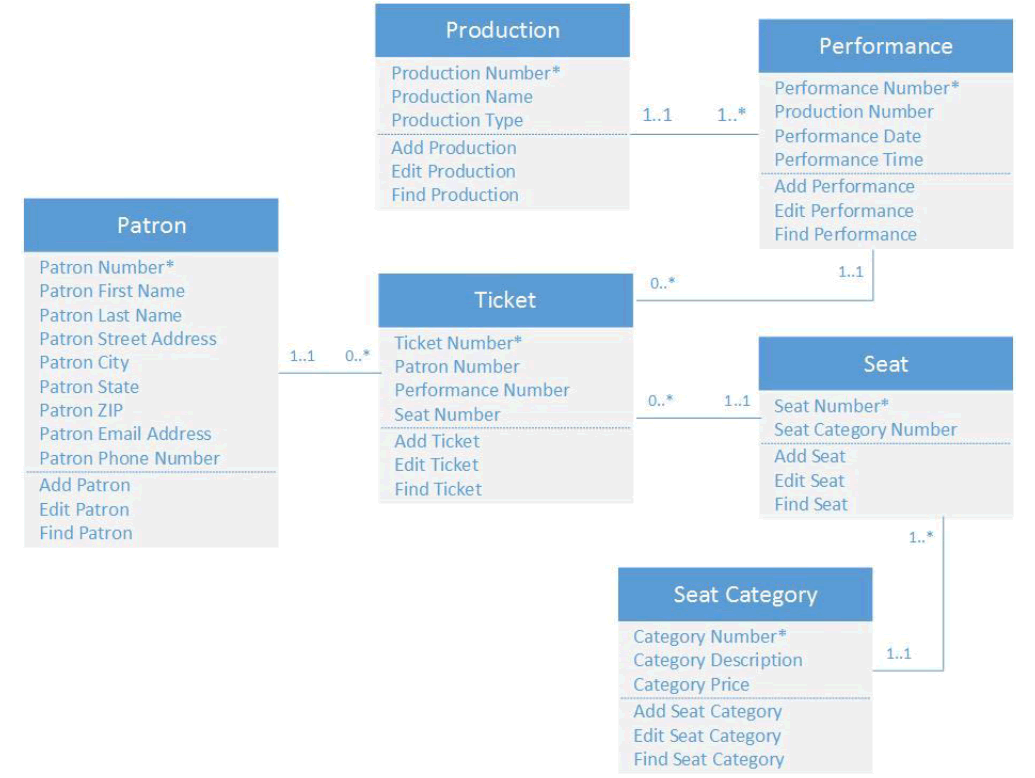
Example User Interface Designs
Patron Information Create/Edit Screen
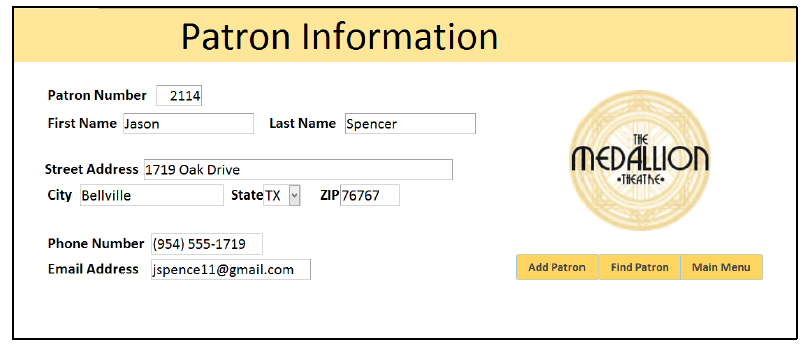
Production and Performances Create/Edit Screen
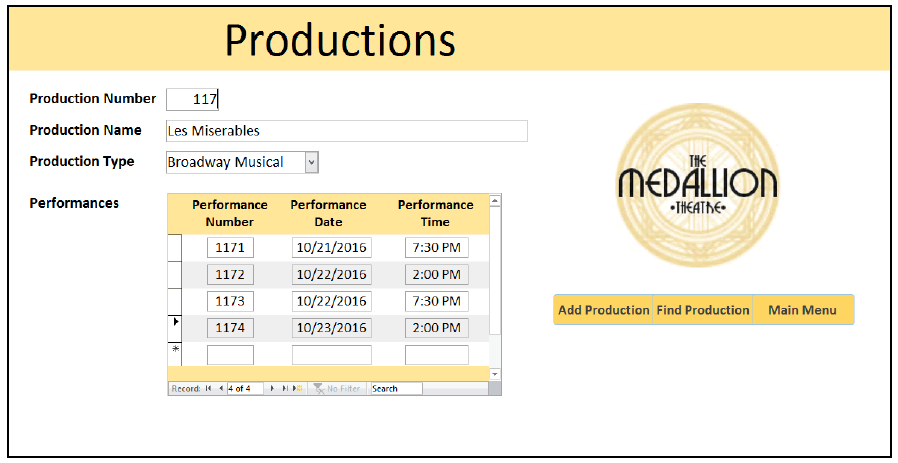
Seats and Seating Categories Create/Edit Screen
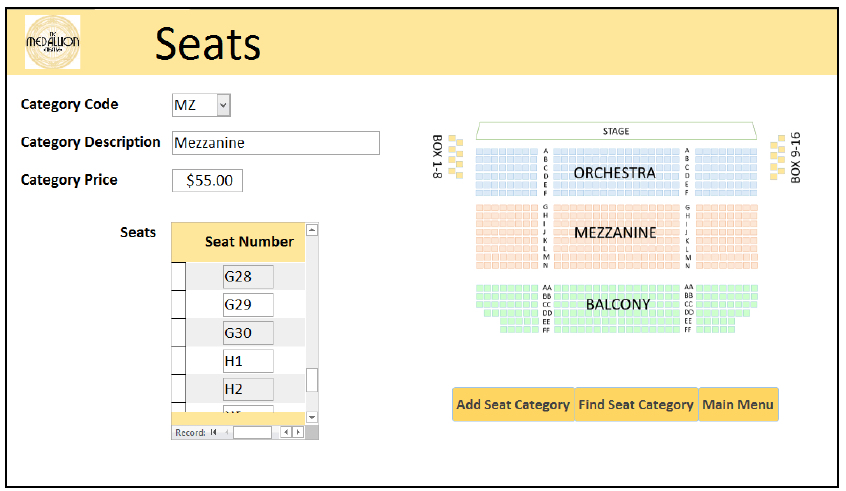
Ticket Sales Screen
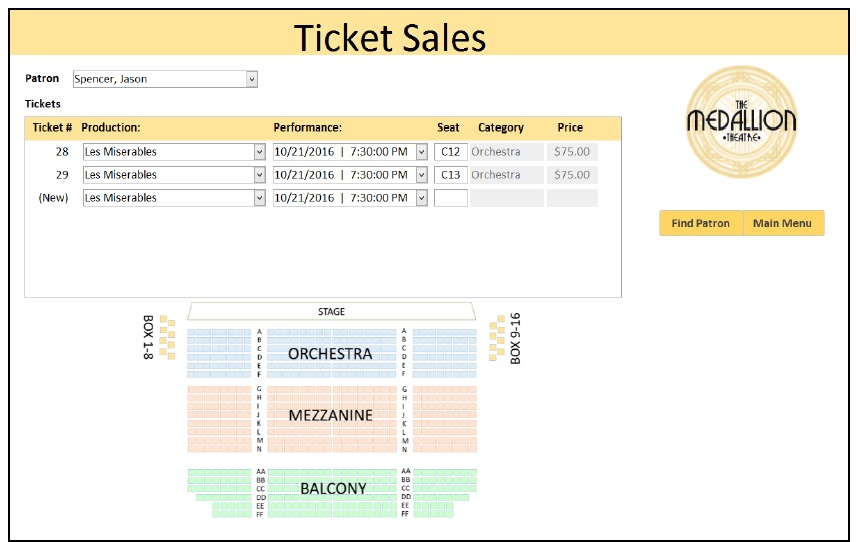
Report: Seats Sold By Performance
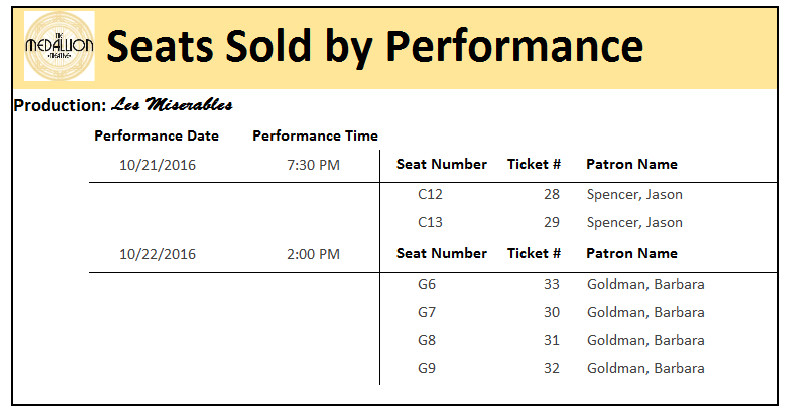
Report: Seats Sold By Patron
